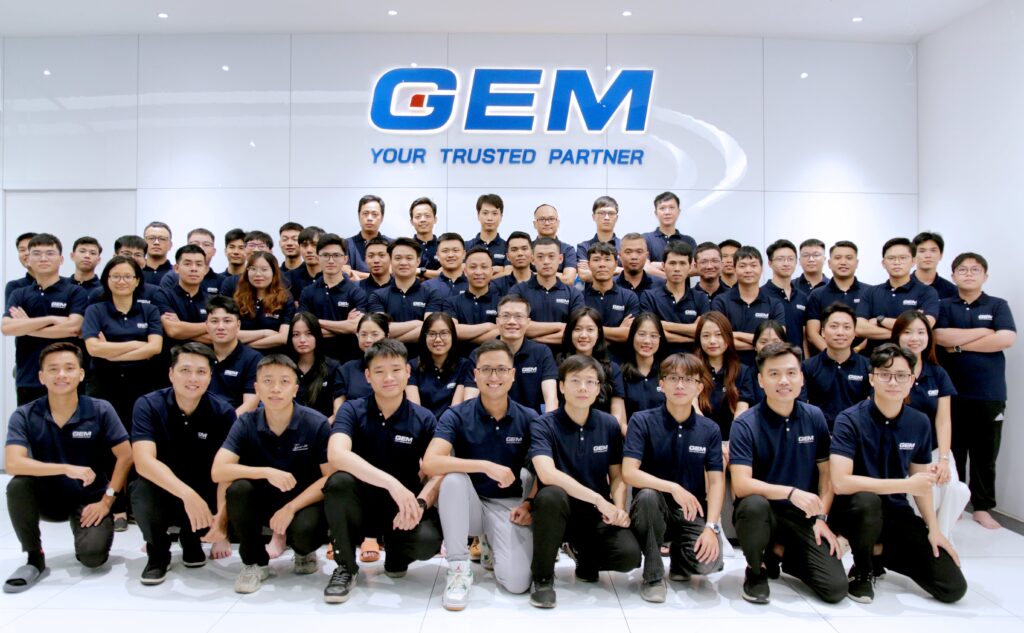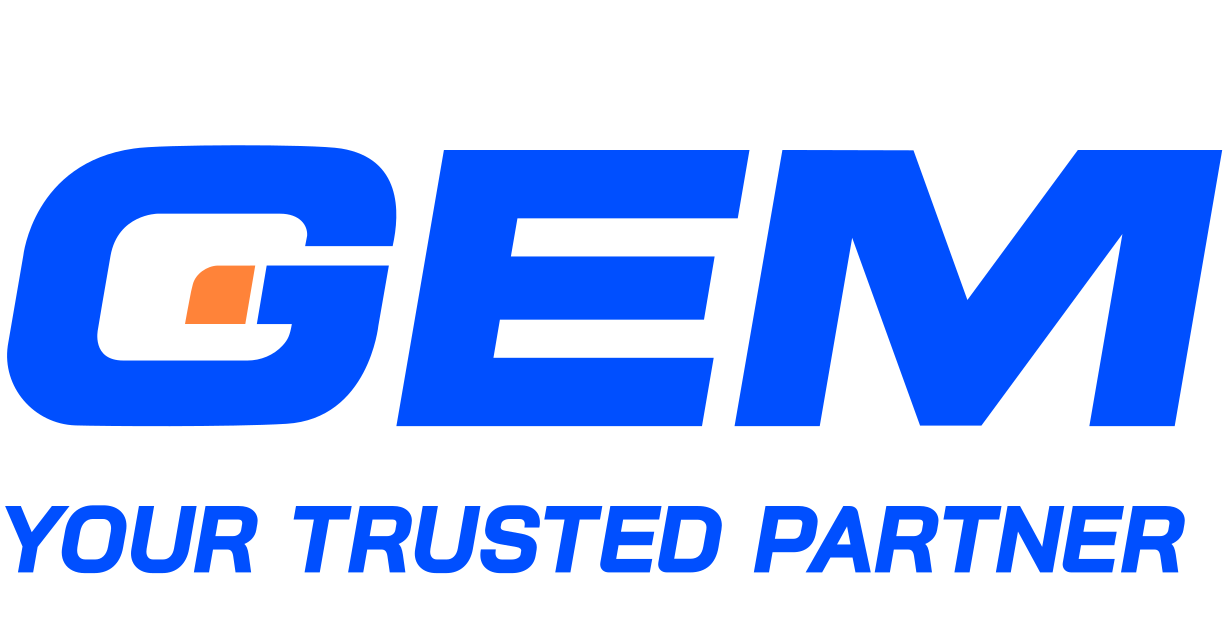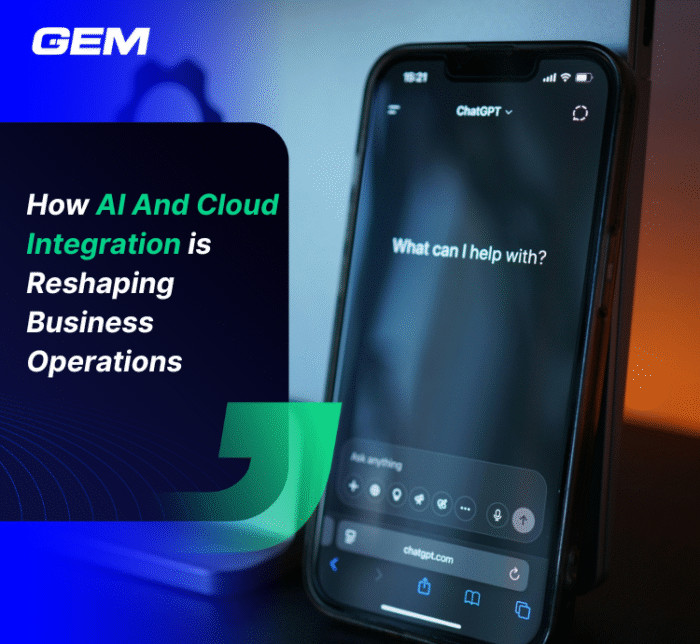Contents
- What is a Human Capital Management (HCM) System?
- HRIS vs. HRMS vs. HCM
- Key functions of an HCM system
- Benefits of Using an HCM System
- Should You Use a Ready-Made HCM or Build Your Own?
- How to Find a Partner to Implement HCM Efficiently?
- Cloud-Based HCM: Why It Matters
- Human Capital Management Services by GEM Corporation
- Conclusion
As workforce expectations evolve, businesses are turning to integrated systems to support everything from hiring to long-term talent development. Understanding “what is HCM” helps organizations align people strategies with business goals, using technology to manage processes and data at scale. With the HCM software market projected to reach nearly USD 65 billion by 2030 (Mordor Intelligence), demand is rising for platforms that offer more than administrative support. This article outlines the core components of HCM, how it differs from other HR systems, and why it’s becoming a priority for companies navigating a changing labor landscape.
What is a Human Capital Management (HCM) System?

A Human Capital Management (HCM) system is a comprehensive software suite designed to support the strategic management and development of an organization’s workforce. It brings together a range of functions, from recruitment and payroll to performance tracking and employee engagement, to manage the entire employee lifecycle. The core purpose of HCM is to optimize this lifecycle, from the moment a candidate is hired to their eventual offboarding or retirement.
These systems are built to:
- Centralize workforce data: All HR-related information is stored in one place, making it easier to access, update, and analyze without manual consolidation.
- Automate HR processes: Routine tasks such as payroll runs, leave tracking, and compliance reporting are handled automatically, freeing HR teams to focus on people strategy.
- Support long-term workforce planning: With structured data and real-time insights, organizations can identify skill gaps, forecast hiring needs, and align talent decisions with business direction.
- Strengthen consistency: By using a single system across locations or departments, organizations maintain standardized policies and procedures.
An HCM system shifts HR from task execution to strategic workforce management, helping businesses stay organized, compliant, and prepared for growth.
HRIS vs. HRMS vs. HCM

While often used interchangeably, HRIS, HRMS, and HCM refer to different scopes of human resource technology. Understanding their distinctions helps organizations choose the right system based on operational needs and strategic priorities.
Human Resource Information System (HRIS)
An HRIS is focused on the administrative side of HR. It handles core processes such as maintaining employee records, managing payroll, monitoring attendance, and supporting compliance. These systems are designed to store and organize employee data in a centralized database, making day-to-day administrative tasks more structured.
Human Resource Management System (HRMS)
An HRMS includes the features of an HRIS but adds capabilities such as benefits administration, performance tracking, and basic training management. It supports both administrative and some functional areas of HR, offering a broader toolkit for managing the employee lifecycle. While still largely focused on process execution, HRMS platforms begin to address employee development and experience.
Human Capital Management (HCM)
HCM systems take a more strategic approach. In addition to the capabilities found in HRIS and HRMS, HCM platforms include tools for workforce planning, people analytics, succession planning, and employee experience management. These systems are designed not only to manage HR operations but also to align workforce strategy with broader business goals.
This breakdown clarifies how each system serves different levels of HR maturity—from foundational administration to strategic workforce management.
| Feature / Capability | HRIS | HRMS | HCM |
| Core HR Functions (Payroll, Records, Compliance) | ✔️ | ✔️ | ✔️ |
| Time and Attendance | ✔️ | ✔️ | ✔️ |
| Benefits Administration | ❌ | ✔️ | ✔️ |
| Performance Management | ❌ | ✔️ | ✔️ |
| Training and Development | ❌ | Basic | Advanced |
| Employee Engagement Tools | ❌ | ❌ | ✔️ |
| Workforce Planning | ❌ | ❌ | ✔️ |
| People Analytics | ❌ | ❌ | ✔️ |
| Strategic Talent Management | ❌ | ❌ | ✔️ |
Key functions of an HCM system

An HCM system is designed to manage the full employee lifecycle through a combination of administrative tools, talent programs, and strategic planning features.Its functions span across multiple domains, helping HR teams manage day-to-day operations while contributing to long-term workforce goals.
Talent Management
This covers the programs and tools used to attract, develop, and retain employees.
- Talent Acquisition: Supports the full hiring process, from sourcing candidates and managing job postings to interview scheduling and onboarding workflows. A structured approach to recruitment helps reduce time-to-hire and improves candidate experience.
- Talent Development: Includes learning management, skills tracking, and career pathing. Many systems also offer performance management tools to support goal-setting, continuous feedback, annual reviews, and succession tracking. These features contribute to long-term employee growth and organizational agility.
Core HR and Workforce Administration

These foundational modules handle employee data and keep HR operations organized and compliant.
- Time and Attendance: Tracks work hours, leave requests, shift patterns, and scheduling. Integration with payroll reduces manual intervention and improves accuracy.
- Payroll Management: Automates pay cycles, tax calculations, and statutory deductions, with built-in checks for compliance with local regulations.
- Benefits Administration: Manages employee enrollment in health plans, retirement contributions, and other programs, often through a self-service portal.
- Compliance and Policy Management: Maintains records required for audits, enforces internal policies, and supports adherence to labor laws across jurisdictions.
Employee Experience and Engagement
These tools are designed to support communication, feedback, and workplace satisfaction.
- Feedback Tools and Surveys: Collect employee input through engagement surveys, pulse checks, and performance feedback forms. This helps identify gaps in morale or alignment.
- Internal Communication Tools: Facilitate company-wide announcements, team updates, and recognition programs. Centralized communication reduces friction and improves transparency.
Analytics & Workforce Planning
Data and analytics features turn employee information into strategic insights.
- Real-Time Dashboards: Provide visibility into key HR metrics such as headcount, turnover, hiring pipeline, and performance distribution.
- Predictive Analytics and Scenario Modeling: Help HR leaders forecast talent needs, identify risk areas, and test workforce planning strategies based on multiple data inputs.
These functions work in coordination to give HR leaders a unified view of the workforce, while also simplifying daily operations.
Benefits of Using an HCM System
Organizations adopting HCM systems often do so to replace fragmented tools and manual processes with an integrated approach. The benefits span efficiency, planning, and workforce outcomes:
- Operational Efficiency: Automates routine HR tasks and consolidates employee data, reducing time spent on administrative work.
- Strategic Workforce Planning: Offers a structured view into current and future talent needs, helping HR align hiring and development efforts with business objectives.
- Improved Employee Retention: Supports talent development and feedback programs that contribute to employee satisfaction and long-term retention.
- Informed Decision-Making: Combines data across HR functions to support decisions backed by real-time insights rather than siloed reports.
- Cost Control: Helps limit manual errors, reduce duplication of work, and improve compliance, contributing to tighter control over HR-related spending.
Should You Use a Ready-Made HCM or Build Your Own?

Deciding between deploying a ready-made HCM system or building a custom solution depends on a company’s goals, internal resources, and long-term workforce strategy. Each option presents trade-offs across cost, scalability, speed, and control.
Ready-made HCM System
A ready-made HCM system, offered by established vendors like SAP, Workday, or Oracle, provides standardized, tested modules that cover core HR needs and scale across large, distributed teams. These platforms are regularly updated to reflect regulatory changes and evolving HR practices. They also come with integrations, security frameworks, and support infrastructure already in place. For most organizations, especially those without deep in-house engineering capacity, these systems offer faster deployment and predictable maintenance costs.
Custom HCM System
Building a custom HCM may appeal to companies with highly specialized processes or unique compliance environments. It offers full control over functionality, user experience, and data handling. But developing and maintaining such a system requires sustained investment in engineering, security, and compliance expertise. It also increases the risk of technical debt over time.
In practice, most mid-sized and large enterprises opt for ready-made systems, customizing only where business needs strongly diverge from standard offerings. This approach balances consistency with flexibility without overextending IT teams or delaying implementation.
How to Find a Partner to Implement HCM Efficiently?

Implementing an HCM system is a high-stakes project that affects every part of the organization. Choosing the right implementation partner is as important as selecting the system itself. Poor execution can lead to delays, budget overruns, low adoption, and fragmented data.
Here’s what to look for when selecting an HCM implementation partner:
- Domain Expertise
Look for firms with a strong track record in HCM projects, ideally with certifications or formal partnerships with your chosen software provider. A partner that understands both the technology and HR’s operating model will be better positioned to align configuration with your business needs.
- Cross-Functional Team
The partner should bring together specialists across project management, integration, compliance, change management, and data migration. HCM projects touch finance, IT, legal, and operations, so the ability to work across functions is key.
- Clarity on Methodology
Ask about their implementation methodology. Do they follow an agile, phased rollout or a big-bang approach? Do they conduct discovery workshops up front? A clear, structured process helps avoid scope creep and misalignment.
- Data and Integration Capabilities
A strong implementation partner should be able to work with your existing systems – payroll, ERP, and identity management, to ensure seamless data flow. They should also offer guidance on data cleansing, mapping, and migration strategy.
- Support for Change Management
Rolling out an HCM system often changes how managers and employees interact with HR. The partner should provide training plans, communication templates, and adoption tracking tools. This reduces friction and accelerates system uptake.
- References and Case Studies
Ask for examples of past HCM implementations in your industry or of similar size. Look for measurable outcomes: faster payroll cycles, improved user satisfaction, better compliance tracking, or reduced ticket volumes post-launch.
- Post-Go-Live Support
Implementation doesn’t end at go-live. Partners should offer hypercare support and a clear plan for transitioning to steady-state operations, whether that’s in-house or through a managed services model.
A capable partner will challenge assumptions, provide clarity in complex decisions, and stay aligned with your long-term workforce strategy.
Explore more: All about HCM Service
Cloud-Based HCM: Why It Matters

As workforce structures become more distributed and business cycles more dynamic, companies are turning to cloud-based Human Capital Management (HCM) platforms to meet new demands.
Advantages Cloud-native HCM offers several operational and strategic advantages:
Scalability on Demand
Cloud architecture supports flexible scaling, which is especially valuable for growing enterprises or those with seasonal workforce needs. Whether adding new users, expanding into new regions, or onboarding after a merger, cloud-based systems accommodate growth without the need for physical infrastructure changes.
Continuous Updates
Unlike on-premise systems that require scheduled downtimes for upgrades, cloud-based HCM platforms deliver regular updates in the background. This reduces disruption and keeps the system aligned with regulatory changes, tax rules, or new functionality—without burdening internal IT teams.
Remote Access and Global Reach
The shift to hybrid and remote work has made anytime-anywhere access to HR systems a baseline requirement. Cloud HCM supports employees and managers across time zones with self-service tools, mobile access, and real-time data synchronization.
Unified Data and System Consistency
Centralized data across locations, functions, and roles helps HR teams maintain consistency in workflows, reporting, and compliance. This also supports better decision-making, as data is updated in real time and accessible through dashboards and analytics tools.
Disadvantages
Despite these advantages, companies should also weigh potential challenges:
Data Security and Privacy
Moving sensitive employee data to the cloud raises questions around access control, encryption, identity management, and compliance with data protection regulations. While top-tier HCM vendors invest heavily in security infrastructure, organizations must apply internal policies and oversight to maintain trust.
Integration with Legacy Systems
Many enterprises still operate ERPs, payroll engines, or time-tracking systems built on older frameworks. Integrating these with a modern cloud HCM requires careful planning, especially around data mapping, API compatibility, and process alignment. Without a robust integration strategy, companies risk fragmentation and duplication of effort.
For companies seeking to modernize their HR function while staying agile, the cloud offers both the infrastructure and the flexibility to support long-term workforce goals.
Human Capital Management Services by GEM Corporation

With over a decade of experience delivering enterprise-grade solutions, GEM Corporation supports organizations in 10+ countries with scalable, high-performance technology tailored to workforce transformation. Our teams bring together domain expertise, industry certifications, and a strong foundation in automation and analytics to help clients modernize HR operations. GEM’s track record includes successful deployments for global enterprises across consulting, telecom, and financial services sectors.
Our Human Capital Management (HCM) services are designed to streamline the full employee lifecycle, from talent acquisition to development, compensation, and workforce analytics. We build intelligent systems that reduce time-to-hire, improve performance visibility, and centralize HR processes through AI-powered platforms. With specialized offerings such as agentic AI for HR automation, real-time analytics dashboards, and learning systems built for personalization, GEM equips HR leaders with tools to align people strategy with business direction. Each solution is built to scale, integrate securely, and adapt to evolving organizational needs.
Conclusion
Human Capital Management (HCM) serves as the foundation for aligning workforce operations with business goals. It connects core HR, talent development, payroll, and analytics into a unified system that supports both daily execution and long-term planning. As companies shift toward cloud-native platforms and data-driven decision-making, understanding “what is HCM” becomes central to navigating workforce complexity at scale. With expertise across AI, automation, and system integration, GEM helps organizations build HCM solutions that are both operationally sound and future-ready. Contact us to learn how we can support your transformation.





